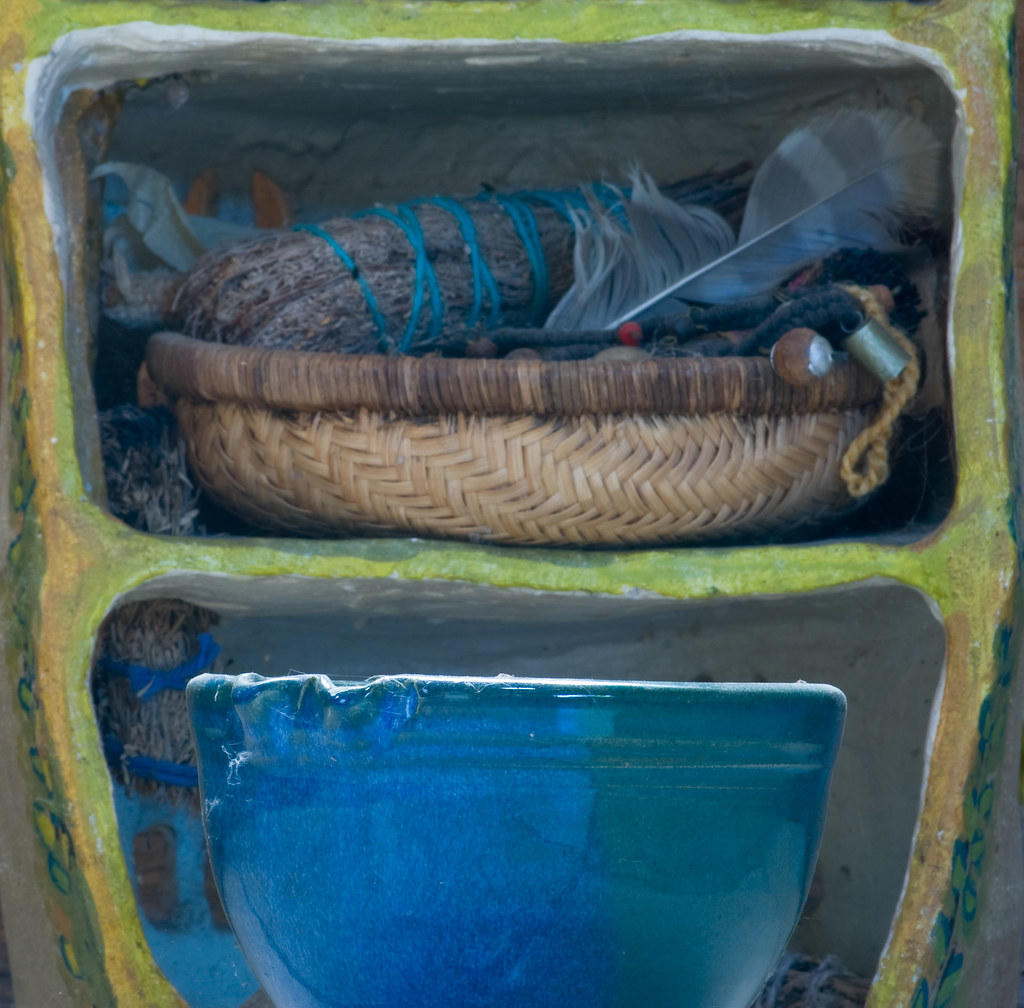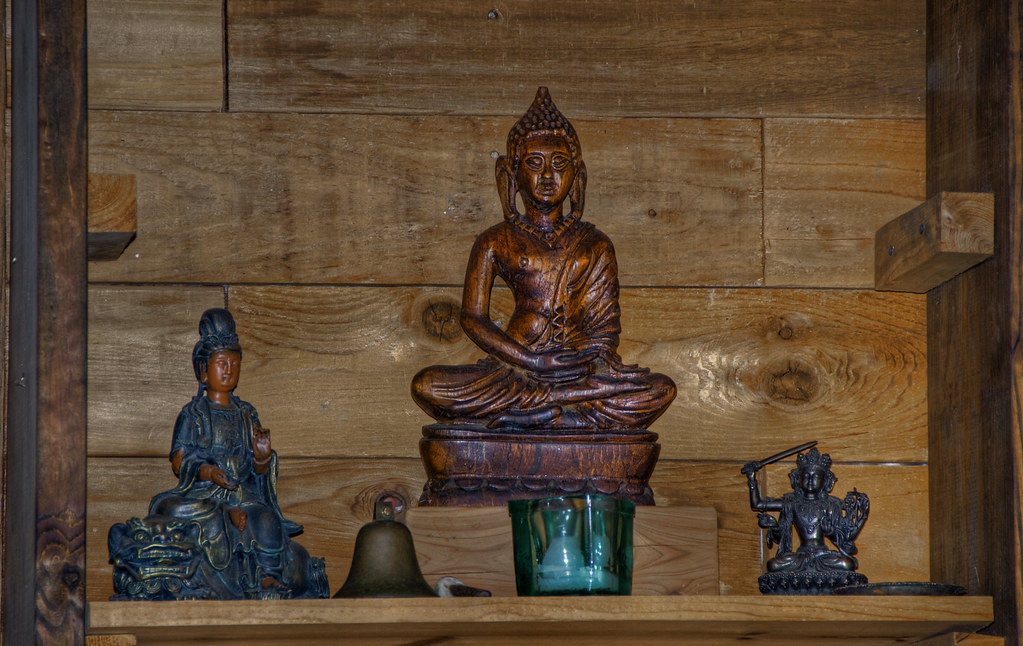
In 1996 or 1997 Kay stayed a few nights in a Navajo hogan in Canyon de Chelly. She had a mystical experience there and came home determined to build something like it on the back of our property, in a place where the previous owners had constructed a sturdy rabbit hutch out of cedar posts, with a corrugated metal roof and siding of the same material. Kay decided to build what we now call "the hogan" (for lack of a better term) next to the former rabbit condo, which would itself be converted into a primitive kitchen and bathroom.
It was not exactly intended as a real hogan, it was more an effort to construct a place that would have something of the same ambience that Kay felt in Canyon de Chelly.
It was all done on the cheap, with used materials and (in part) volunteer labor. We had a housemate at the time, Catherine, a single woman who wanted more privacy, and she put up some of her own money for the construction in return for free rent if she could live there when it was finished. (She lived there for several years.) Kay's idea was to eventually use it to teach her Native American classes--she was a professor of anthropology and taught Native American religions and Native cultures of the Southwest at St. Edward's University.
Unfortunately, she never had the opportunity to do so. She died before the deal with Catherine was up.
The completed structure is octagonal, stuccoed on the outside and paneled inside with rough-cut local juniper, which still has a faint, nice odor. A door faces east, as it is supposed to, but inauthentically for a hogan there is also another door. The floor is several colors and sizes of ceramic tiles with a polished ammonite fossil placed as a center tile under the skylight. Genuine Navajo hogans of course do not have ceramic tile floors, much less skylights, and this skylight, though pretty, has been a continual source of trouble. The octagonal glass has a decorative pattern etched in it, but being glass, has to be covered with plexiglass on account of occasional hailstorms. The plexiglass, however, eventually cracks through thermal expansion, and I have had to replace it twice.
A breezeway from the inauthentic door connects the hogan with a long narrow kitchen, and then through another door, a bathroom. We replaced the dirt floor of the rabbit hutch with rough-cut limestone flagstones.
When we finished building it, we had a big, eclectic, and genuinely bizarre inaugural ceremony. A lot of people came, friends, Kay's colleagues, relatives, and various Indians who seemed to approve of the place, perhaps grudgingly. There were drums and chanting, and finally a sort of conga line snaking around the building. A ceremonial pipe was passed around. Everyone brought a small gift, and these gifts were placed on a small pottery altar made by Kay's artist sister. It was a weird and lovely occasion.
The altar, and the gifts, are still there.

Catherine lived there five or six years, staying on past her initial monetary contribution and after that paying some rent. I would probably still be renting it to her, but she found unexpected love, got married and moved out. After that I continued renting it out, usually to to single women who thought it was quaint and cozy, but a couple of years ago I decided not to be a landlord any more, and when the last renter left I converted it to something more like what Kay had in mind. I now use it--infrequently--as a guest room, as for example this Thanksgiving when I will have an overflow crowd of visitors. But mainly I use it as a meditation room.
So I get up before sunrise every morning and after feeding the dog and the 2 cats walk the 75 yards from my house, take off my shoes, go inside, enter the dark, cedar-smelling room, bow in the direction of both altars, the original hogan altar plus my Buddha altar (it's too dark to see them) and then I sit on a black cushion for 40 minutes, followed by 15 minutes or so of some kind of free form stretching or yoga--I am not sure what to call it.
The Buddha altar is a bookshelf which has an 8 inch high wooden statue of Siddhartha Gautama on it. Kay brought this statue back from Central America in 1963 or 64, having gotten it from a Guatemalan Indian woodcarver who carved it from a tropical hardwood faithfully making a 3-dimensional reality of a Life Magazine photograph of a Buddha statue. To round out a proper Zen altar, I also have a diminutive cheesy statue of Manjusri brandishing a comical sword of wisdom, and a cheap ceramic Guan Yin. Beside them sits an antique bronze school bell with a broken handle (yes, I know--if you are not at least 60 years old you don't have the slightest idea what I am talking about) that I removed the clapper from, that I signal the beginning of my meditation with using the clapper as a hammer to strike the bell from the outside. (I am not calling in a bunch of students from recess with fire-alarm clanging, so I don't need the bell to have its original form.)

So I come out in the dark and sit, with a certain amount of ceremonialism, sometimes chanting the heart sutra and the three refuges.
Depending on the time of year, it may be daylight by the time the 40 minutes are up.
I hesitate to write about what happens during meditation. Maybe nothing more than a turning off of left-brain chatter and static and scheming. Maybe something else.
I have practiced Zen meditation for many years, and previously I had a place where I sat zazen in my house, but I like this better. I consider the space sacred to Kay's memory. It seems to be the right place to go in the morning.

